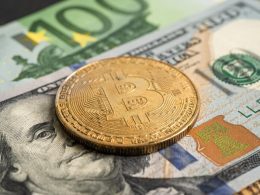Global inflation and interest rates are two critical economic indicators that influence a country’s economic health, consumer behavior, and monetary policy. As countries navigate through post-pandemic recovery, geopolitical tensions, and fluctuating commodity prices, the dynamics of inflation and interest rates have become increasingly complex. This article explores the current state of global inflation and interest rates, providing a comprehensive analysis and comparative overview of various countries.
Understanding Inflation and Interest Rates

What is Inflation?
Inflation is the rate at which the general level of prices for goods and services rises, leading to a decrease in purchasing power. It is typically measured by the Consumer Price Index (CPI) or the Producer Price Index (PPI). High inflation erodes the value of money, affecting savings and investments, while low inflation can indicate weak demand in the economy.
What are Interest Rates?
Interest rates are the cost of borrowing money or the return on savings, set by a country’s central bank. They influence economic activity by encouraging or discouraging borrowing and spending. Central banks adjust interest rates to control inflation, stabilize the currency, and achieve economic growth.
Global Trends in Inflation
In 2024, global inflation rates have been influenced by several factors including supply chain disruptions, energy price volatility, and monetary policies. Here’s an overview of inflation trends in major economies:
- United States: Inflation has moderated compared to 2022-2023 but remains above the Federal Reserve’s target. Key drivers include housing costs and energy prices.
- Eurozone: The Eurozone faces persistent inflation, primarily driven by energy prices and supply chain constraints, with significant variations among member countries.
- United Kingdom: The UK has seen high inflation due to Brexit-related trade disruptions and increased import costs.
- China: China’s inflation remains relatively low, supported by government measures to stabilize prices and manage economic growth.
- India: India experiences moderate inflation, influenced by food prices and fuel costs, with the central bank actively managing interest rates to maintain stability.
Global Trends in Interest Rates
Interest rates across the globe have been influenced by inflation rates and economic policies aimed at stimulating or cooling down economies. Here’s a snapshot of interest rates in key economies:
- United States: The Federal Reserve has raised interest rates to combat high inflation, with a current rate of 5.25%.
- Eurozone: The European Central Bank has adopted a cautious approach, with interest rates at 3.75%, balancing between inflation control and economic growth.
- United Kingdom: The Bank of England has increased rates to 4.75% to manage high inflation.
- China: The People’s Bank of China maintains a lower interest rate of 2.75% to support economic growth amid global uncertainties.
- India: The Reserve Bank of India has set the rate at 6.50%, aiming to curb inflation while supporting growth.
Analysis of Inflation and Interest Rate Dynamics
Impact of Inflation on Economies
High inflation can lead to increased cost of living, wage pressures, and reduced consumer spending. It can erode savings and fixed-income investments, making it crucial for central banks to implement effective monetary policies. Countries with high inflation often resort to increasing interest rates to curb spending and borrowing.
Impact of Interest Rates on Economies
High interest rates can slow down economic growth by making borrowing more expensive for consumers and businesses. Conversely, low interest rates can stimulate growth by encouraging spending and investment. However, prolonged low rates can lead to excessive borrowing and financial instability.
Comparative Analysis of Selected Countries
To understand how different countries are managing their inflation and interest rates, let’s compare key indicators from selected economies:
Comparative Table: Inflation Rates and Interest Rates
| Country | Inflation Rate (%) | Interest Rate (%) |
|---|---|---|
| United States | 4.5 | 5.25 |
| Eurozone | 5.1 | 3.75 |
| United Kingdom | 6.2 | 4.75 |
| China | 2.1 | 2.75 |
| India | 5.8 | 6.50 |
Analysis Table: Key Factors Influencing Inflation and Interest Rates
| Country | Key Inflation Drivers | Interest Rate Policy |
|---|---|---|
| United States | Housing costs, energy prices | Aggressive rate hikes to combat inflation |
| Eurozone | Energy prices, supply chain disruptions | Cautious increases to balance growth |
| United Kingdom | Trade disruptions, increased import costs | Steady hikes to manage high inflation |
| China | Government stabilization measures, controlled demand | Lower rates to support economic growth |
| India | Food prices, fuel costs | Moderate hikes to maintain stability |
Regional Highlights and Case Studies
United States: Balancing Act
The U.S. Federal Reserve’s aggressive interest rate hikes have been aimed at controlling inflation that surged during the pandemic recovery. While these measures have shown some success in reducing inflation rates, they also pose the risk of slowing down economic growth and increasing unemployment.
Eurozone: Diverse Challenges
The Eurozone’s inflation is driven by a mix of energy costs and supply chain issues, with significant disparities among member countries. The European Central Bank faces the challenge of implementing a one-size-fits-all monetary policy in a region with diverse economic conditions.
United Kingdom: Post-Brexit Economy
The UK’s post-Brexit economic landscape has seen significant inflation due to increased trade barriers and import costs. The Bank of England’s interest rate hikes aim to stabilize the economy, but there are concerns about the impact on growth and consumer spending.
China: Stability Focus
China’s relatively low inflation and interest rates reflect the government’s focus on maintaining economic stability and growth. Measures such as price controls and targeted stimulus have helped manage inflation, but the country remains cautious of global economic uncertainties.
India: Balancing Growth and Inflation
India’s inflation is influenced by volatile food and fuel prices. The Reserve Bank of India has adopted a balanced approach with moderate interest rate hikes to ensure price stability while supporting economic growth.
Conclusion
Global inflation and interest rates remain dynamic and interconnected, influenced by a myriad of factors including geopolitical events, supply chain disruptions, and economic policies. Countries adopt varied strategies to manage these indicators, reflecting their unique economic conditions and policy priorities. Understanding these dynamics is crucial for policymakers, businesses, and consumers to navigate the complexities of the global economy.
Summary Tables
Analysis Table
| Country | Key Inflation Drivers | Interest Rate Policy |
|---|---|---|
| United States | Housing costs, energy prices | Aggressive rate hikes to combat inflation |
| Eurozone | Energy prices, supply chain disruptions | Cautious increases to balance growth |
| United Kingdom | Trade disruptions, increased import costs | Steady hikes to manage high inflation |
| China | Government stabilization measures, controlled demand | Lower rates to support economic growth |
| India | Food prices, fuel costs | Moderate hikes to maintain stability |
Comparative Table
| Country | Inflation Rate (%) | Interest Rate (%) |
|---|---|---|
| United States | 4.5 | 5.25 |
| Eurozone | 5.1 | 3.75 |
| United Kingdom | 6.2 | 4.75 |
| China | 2.1 | 2.75 |
| India | 5.8 | 6.50 |
By examining these tables and the detailed analysis, stakeholders can gain a deeper understanding of how different countries are navigating the challenges of inflation and interest rates in the current global economic landscape.












